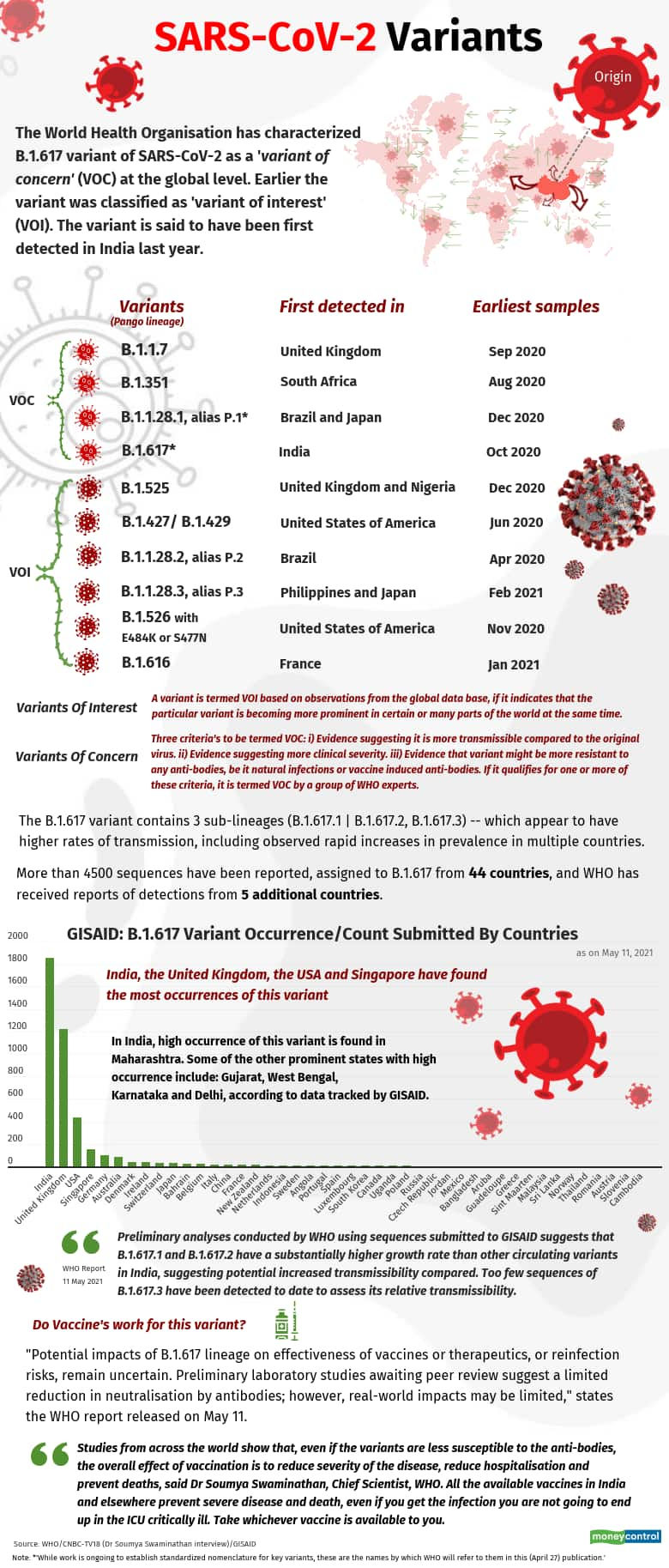



The coronavirus B.1.617 strain has recently been declared a “variant of concern” by the World Health Organization (WHO), with scientists saying the strain first seen in India is more transmissible. The variant has been largely blamed for the furious second wave in India that has set new records of daily infections and deaths, overwhelming the healthcare system.
Here's what we know about it:The B.1.617 variant of SARS-CoV-2 virus, having three sub-lineages (B.1.617.1, B.1.617.2, B.1.617.3), has a higher rate of transmission, WHO says.
Rapid increases in prevalence across several countries has been observed and that is why it is now a "variant of concern (VOC)" at the global level.
More than 4,500 sequences have been uploaded on the GISAID—an open-access genomic database—assigned to B.1.617 from 44 countries and another five countries have reported its detection to the WHO. The B.1.617 variant is believed to have been detected in India in October 2020. Initial findings by the WHO reveals that B.1.617.1 and B.1.617.2 have a “substantially higher growth rate than other circulating variants in India, suggesting potential increased transmissibility compared. Too few sequences of B.1.617.3 have been detected to date to assess its relative transmissibility,” the report said. The possible impacts of B.1.617 and its sub-lineages on the efficacy of vaccines, therapeutics or reinfection risks remain uncertain, the international health agency states. “Preliminary evidence suggests potential reduced effectiveness of Bamlanivimab, a monoclonal antibody used for COVID-19 treatment, and potentially slightly reduced susceptibility to neutralisation antibodies (limited evidence available for B.1.617.1),” it said.
Discover the latest Business News, Sensex, and Nifty updates. Obtain Personal Finance insights, tax queries, and expert opinions on Moneycontrol or download the Moneycontrol App to stay updated!
Find the best of Al News in one place, specially curated for you every weekend.
Stay on top of the latest tech trends and biggest startup news.